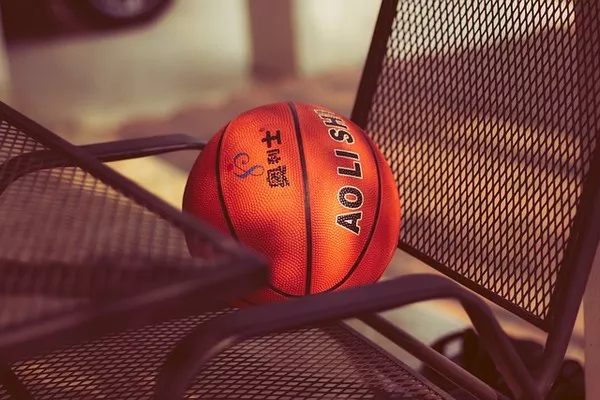Basketball, a sport beloved by millions worldwide, is characterized by its fast-paced action and strategic gameplay. Central to the dynamics of basketball is the composition of teams and the number of players involved in a game. Despite the widespread belief that basketball consists of 11 players, a closer examination reveals a more nuanced reality. This article delves into the composition of basketball teams, on-court positions, substitution strategies, variations across leagues, historical context, and FAQs to provide a comprehensive understanding of player numbers in basketball.
Team Composition: Exploring the Standard
Contrary to the misconception, a standard basketball team comprises 12 to 15 players. However, only five players from each team are permitted on the court at any given time during gameplay. The remaining players constitute the bench, ready to substitute or support their teammates when needed. This structure ensures a balance between active participation and strategic depth within the team.
On-Court Positions: Unveiling the Roles
Each of the five players on the court assumes a distinct role, contributing uniquely to the team’s overall strategy. These positions include:
Point Guard: Typically the team’s primary ball-handler and playmaker, the point guard orchestrates offensive plays, facilitates ball movement, and sets the tempo of the game.
Shooting Guard: Renowned for their scoring prowess, shooting guards excel in shooting from long-range, driving to the basket, and defending against opposing guards.
Small Forward: Combining elements of athleticism, scoring ability, and defensive skills, small forwards play a versatile role, contributing to both offense and defense while often guarding the opposing team’s best perimeter player.
Power Forward: Known for their physicality and rebounding prowess, power forwards excel in scoring inside the paint, grabbing rebounds, setting screens, and defending against taller opponents.
Center: Typically the tallest player on the team, the center dominates the area near the basket, excelling in scoring close to the rim, blocking shots, grabbing rebounds, and anchoring the team’s defense.
Each position requires specialized skills and attributes, emphasizing teamwork and synergy among players on the court.
Substitutions: Strategic Maneuvers
Substitutions play a crucial role in basketball, allowing coaches to manage player fatigue, adapt to opponent strategies, and maintain optimal team performance. Coaches strategically rotate players in and out of the game based on various factors, such as matchups, game situations, and individual player performance. Substitutions provide opportunities for players on the bench to make meaningful contributions while ensuring that the team remains competitive throughout the game.
League Variations: Understanding Differences
While the standard team size remains consistent across most basketball leagues, variations exist among different levels of play. For instance:
High School: High school basketball teams typically consist of 12 to 15 players, mirroring the standard composition seen at higher levels of play.
College: College basketball teams also adhere to the 12 to 15 player standard, with regulations set by governing bodies such as the NCAA.
Professional Leagues: Professional leagues like the NBA maintain similar team sizes, with 12 to 15 players per team, ensuring consistency and parity across the league.
Despite these similarities, leagues may implement slight variations in rules and regulations governing player eligibility, roster sizes, and substitution protocols.
Historical Context: Tracing the Evolution
The history of basketball’s team sizes reflects the evolution of the sport since its inception. Dr. James Naismith, credited with inventing basketball in 1891, initially devised a game with a 9 vs. 9 format, emphasizing teamwork, agility, and skill. Over time, the sport underwent refinements and rule changes, leading to the establishment of the modern 5 vs. 5 format seen today. The evolution of basketball’s team sizes underscores the sport’s adaptability and enduring appeal across generations.
FAQs: Addressing Common Inquiries
Why are there only five players on the court at a time?
The five-player format in basketball maximizes player involvement while ensuring efficient gameplay and strategic depth. With fewer players on the court, each individual’s contributions become more significant, emphasizing teamwork and coordination.
Can players switch positions during a game?
While players typically specialize in specific positions, they may occasionally switch roles based on game circumstances, coaching strategies, or player versatility. Adaptability and versatility are valued traits in modern basketball.
How are substitutions made in basketball?
Substitutions occur during stoppages in play, such as timeouts, fouls, or at the beginning of quarters. Coaches signal for substitutions by notifying officials and making player changes at designated substitution areas near the sidelines.
Are there restrictions on the number of substitutions allowed?
Leagues may impose restrictions on the frequency and timing of substitutions, aiming to maintain the flow of the game and prevent undue delays. Coaches must adhere to substitution rules outlined by the governing bodies of their respective leagues.
See Also How Many Cm High Is A Basketball Hoop
In conclusion
The composition of a basketball team extends beyond the misconception of 11 players, encompassing a dynamic interplay of roles, strategies, and historical evolution. Understanding the nuances of team sizes, on-court positions, substitution tactics, league variations, and historical context enriches one’s appreciation for the sport’s complexity and enduring appeal. As basketball continues to captivate audiences worldwide, its fundamental principles of teamwork, skill, and strategy remain ever-present on the hardwood.


